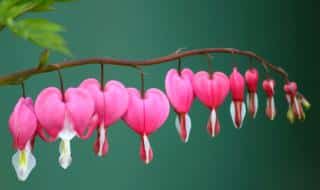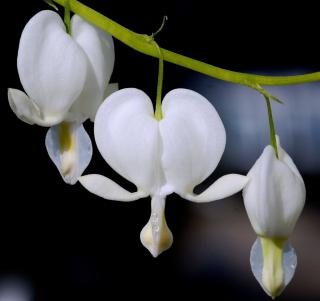

Bleeding heart is a sumptuous perennial bearing elegant and colored flowers.
Basic Bleeding heart facts
Name – Lamprocapnos spectabilis
Formerly – Dicentra spectabilis
Family – Papaveraceae
Type – perennial
Height – 8 to 24 inches (20 to 60 cm)
Exposure – part sun
Soil – ordinary, well drained
Flowering – May to August
Caring for this from planting to blooming is quite easy and the decorative impact of bleeding heart is exceptional.
Equally good are spring and fall for plants purchased in pots.
However, it is slightly better to plant in fall to favor root development before winter hits. If you plant during spring, avoid days of frost and freezing.
If properly settled in, bleeding heart requires very little care. It is thus important get the planting step right.
You can easily split your bleeding heart through crown division in fall.

Although most varieties bear pink flowers, some are white-flowered such as Lamprocapnos cucullaria and L. formosa aurora.

Indeed, along a floral scape 8 to 12 inches (20 to 30 cm) long, very beautiful pink, white or red hearts appear, each about 1 inch (2 to 3 cm) long.
Another name for the plant refers to Saint Mary: Mary’s heart. The name alone will help you soothe your soul if you plant it near your meditation garden.
This is a classical elegant ornament plant. It will grow and shine in a flower bed, along edges or in a garden box.
A true marvel all summer long, in the garden or on your terrace!
Lastly, note that bleeding heart is poisonous. Always handle with gloves to forego risks of skin rash.
Recently, genetic research places this plant in a family of its own: Lamprocapnos spectabilis. It’s actually a cousin of the common poppy plant!
Read also: